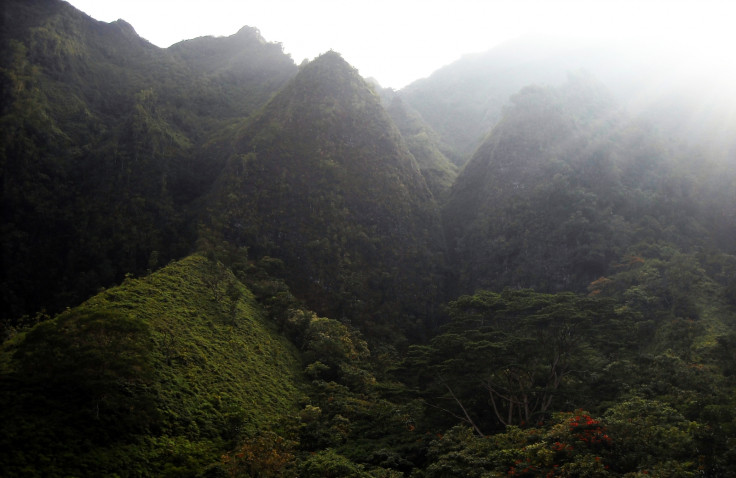Oahu: The Hawaiian Island that is dissolving from within

A Hawaiian island is slowly dissolving from within and will eventually break down to become a flat, low-lying land mass. Oahu is the third largest of the Hawaiian islands and is home to about two thirds of the population of the US state.
It is almost 600 miles squared and formed from two extinct volcanoes – Waiʻanae and Koʻolau – which currently rise to a highest point of 1,220m above sea level. However, this is all set to change, with the two mountains eventually dissolving from the inside, researchers at Brigham Young University in Hawaii discovered in 2012.
Initially, scientists had been looking at the rate of erosion – but this turned out to be the lesser force driving the island's demise. Geologist Steve Nelson explained: "We tried to figure out how fast the island is going away and what the influence of climate is on that rate. More material is dissolving from those islands than what is being carried off through erosion. All of the Hawaiian Islands are made of just one kind of rock. The weathering rates are variable, too, because rainfall is so variable, so it's a great natural laboratory."
Researchers compared groundwater against stream water to find out which one removed more mineral material. They spent two months sampling both sources and used ground and surface water estimates from the USGS (United States Geology Society) to calculate the total quantity of mass that disappears from Oahu every year. They found underwater fresh springs removed most of the mineral material from Oahu, with groundwater carrying as much as 12 times more dissolved solids than surface water.
The team also noted that plate tectonics are important when working out the future of the island. As Oahu is pushed north-west, it will rise in elevation at a slow and steady rate. Their findings indicate that the island will grow for another 1.5 million years – but after this the force of the groundwater will win over and it will start its slow descent down to sea level.
"Emergence will eventually cease and subsidence will begin as Oahu moves further from the hot spot currently centred at the Kilauea volcano," the study published in the journal Geochimica et Cosmochimica Acta said. "The combined effects of subsidence and denudation should eventually decrease the effectiveness of the Koolau Range as a trap to trade wind moisture, allowing increasingly larger rainfalls to be trapped by the Waianae Range and ultimately enhancing denudation in that portion of Oahu."
© Copyright IBTimes 2025. All rights reserved.






















